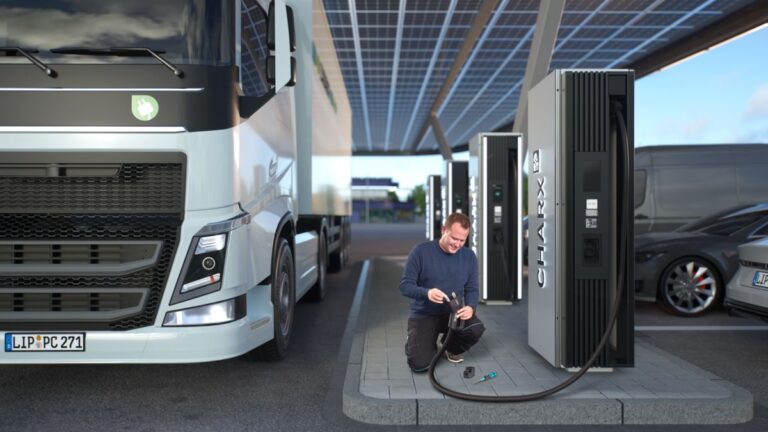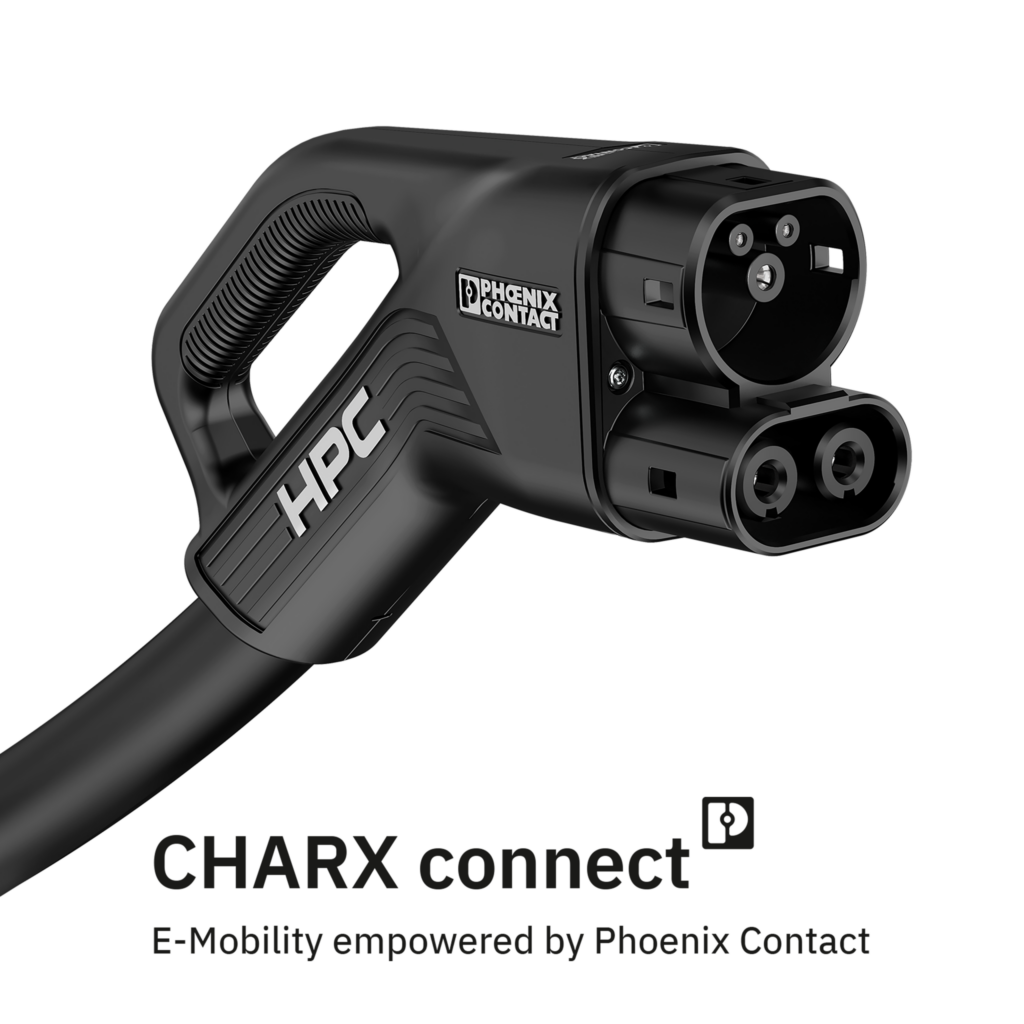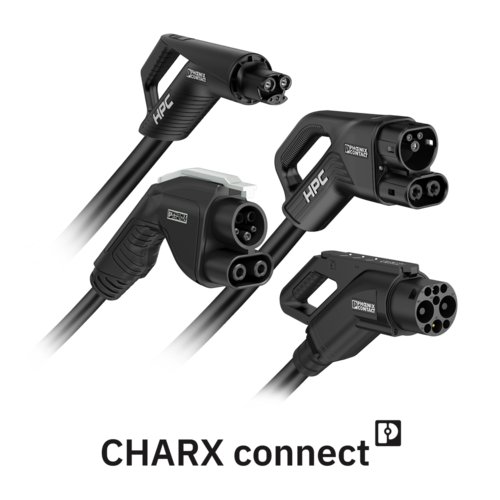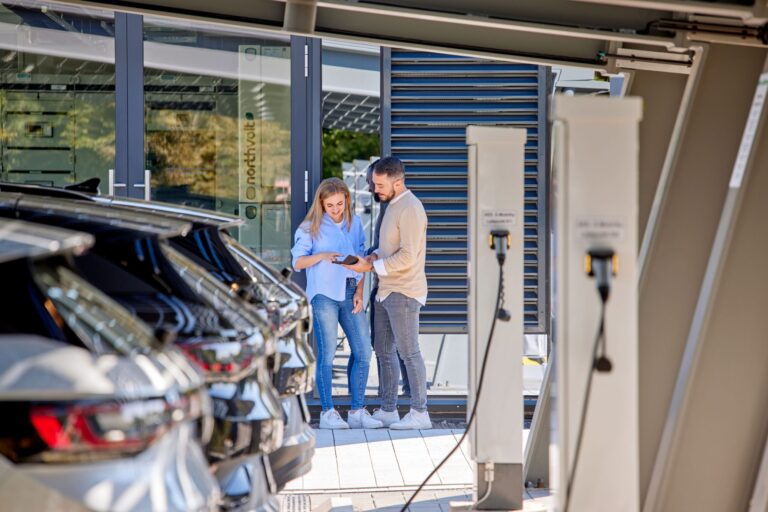The mobility of the future is being shaped now, including that of the commercial vehicle sector, where CCS megawatt charging is setting new standards. The focus of the transformation is on our climate, but of course also on the interests of companies. The electrification of road transport as a whole is an important lever for achieving our climate targets. Innovative technologies are helping to make the electrification of the commercial vehicle sector efficient and economical.
Developments in the electric utility vehicle market
While electric cars are already widespread and are becoming increasingly established in everyday life, the market for electric utility vehicles is currently experiencing impressive growth. In 2024, the market share of electric utility vehicles reached a new record high.
Ulrich Aschenbroich, Division Manager Phoenix Contact E-Mobility GmbH

This also reflects the increasing acceptance of and demand for environmentally friendly transportation solutions. This positive development is being boosted by a number of factors, including significant advances in battery technology, the introduction of stricter emissions regulations and targeted support in the form of government subsidies and tax incentives.
Technological advances in CCS megawatt charging
The latest innovations in the field of CCS megawatt charging connectors make it possible to recharge batteries of electric utility vehicles with up to one megawatt of power in a short time. Modern cooling concepts, optimized cable structures and real-time temperature monitoring ensure a safe and efficient charging process. After all, reliability at the charging station plays a decisive role for logistics companies and entrepreneurs. The second generation of liquid-cooled CCS charging connectors takes ultra-fast HPC charging to a new level: 1,000 kW is transmitted in boost mode and 800 kW continuously.
The role of charging infrastructure for electric utility vehicles
A central aspect of the electrification of utility vehicles is the charging infrastructure. Battery capacities and charging power play a decisive role here. With an enormous output of one megawatt, it is possible to charge even large utility vehicles in long-distance logistics in a reasonable amount of time using the established CCS standard. A technological advancement of the established CCS standard, which is of great importance for both the acceptance and practical use of electric utility vehicles. This is because electric utility vehicles are seen as the most cost-effective solution for the logistics industry in the long term, as they have lower operating costs and require less maintenance.
Challenges facing the e-mobility industry
Logistics companies often still have mixed feelings about electrifying their vehicles. In addition to critical issues such as high acquisition costs, the fact that the range of e-trucks still needs to be extended in some cases and the comparatively small number of models still available, the charging infrastructure is a basic prerequisite for the business. Downtimes and delays caused by defective, unavailable or throttled charging infrastructure cost logistics companies dearly. Reliable charging connectors are a prerequisite for a reliable charging infrastructure network.
Long-distance logistics in particular depends on large battery capacities and reasonable charging times. After 4.5 hours of driving, a 45-minute break is mandatory, which must be sufficient to recharge the battery.
Ulrich Aschenbroich, Division Manager Phoenix Contact E-Mobility GmbH
Rethinking cooling and maintenance for CCS megawatt charging
Safety plays a central role for users and operators: charging infrastructure must function reliably and safely. Robust design and integrated temperature monitoring in real time ensure a high level of safety. Monitoring with Pt-1000 sensors ensures that the charging connectors do not overheat, while leakage detection identifies potential problems at an early stage, without any additional electronics.
An innovative cooling concept with insulated cables and an environmentally friendly water-glycol mixture ensures efficient heat dissipation at the crucial contact points. Maintenance has also been simplified: mating face frames and contacts can be replaced directly at the charging station without opening the housing or draining the coolant. This saves time and costs when servicing is required.

Future prospects and upgrades
With the enormous charging power of the CCS megawatt charging connector, not only electric cars can be charged in just a few minutes. There are also developments currently being observed by car manufacturers who want to make their electric vehicles even more attractive to their customers with charging powers in the megawatt range. For the first time, many electric utility vehicles, which require high charging powers with their large batteries in order to achieve acceptable charging times during scheduled breaks, are also quickly ready for use again. In the future, upgrades to the Megawatt Charging System (MCS) could follow for even more required power.
You can read more about this in the article “CCS or megawatts? How much charging power does e-mobility really need – and when?“, which takes a detailed look at the requirements for charging power in e-mobility.
Conclusion
The electrification of road transport, especially utility vehicles, is an important step towards the necessary change in mobility. Advances in battery technology, but above all in the expansion of the charging infrastructure, are making this development increasingly practicable. CCS megawatt charging enables large batteries of utility vehicles to be charged quickly with up to one megawatt of power, which promotes the acceptance and practical use of electric utility vehicles. The advanced cooling and safety features ensure reliable charging processes, while the possibility of future upgrades to the Megawatt Charging System (MCS) represents a sustainable investment.
FAQ
Frequently asked questions
What is CCS Megawatt Charging and why is it important for commercial vehicles?
CCS Megawatt Charging (Combined Charging System) enables charging power in the megawatt range and is specifically designed for heavy-duty vehicles such as trucks and buses. Thanks to extremely high charging capacities, large batteries can be charged in the shortest possible time, significantly increasing operational readiness in freight transport.
What advantages does megawatt charging offer compared to conventional fast-charging methods?
Megawatt charging reduces charging times from several hours to just a few minutes. This is crucial for the logistics industry as it minimizes downtime. Additionally, the technology supports the electrification of long-haul transport and contributes to CO₂ reduction.
What technical requirements are necessary for CCS Megawatt Charging?
Megawatt charging requires special high-performance charging cables, powerful chargers, and a robust grid connection infrastructure. Vehicles must also be equipped with appropriate CCS high-power interfaces to safely handle the high currents.
Discover suitable products now
Here you will find a selection of relevant products – based on the topics and recommendations from our blog post.






